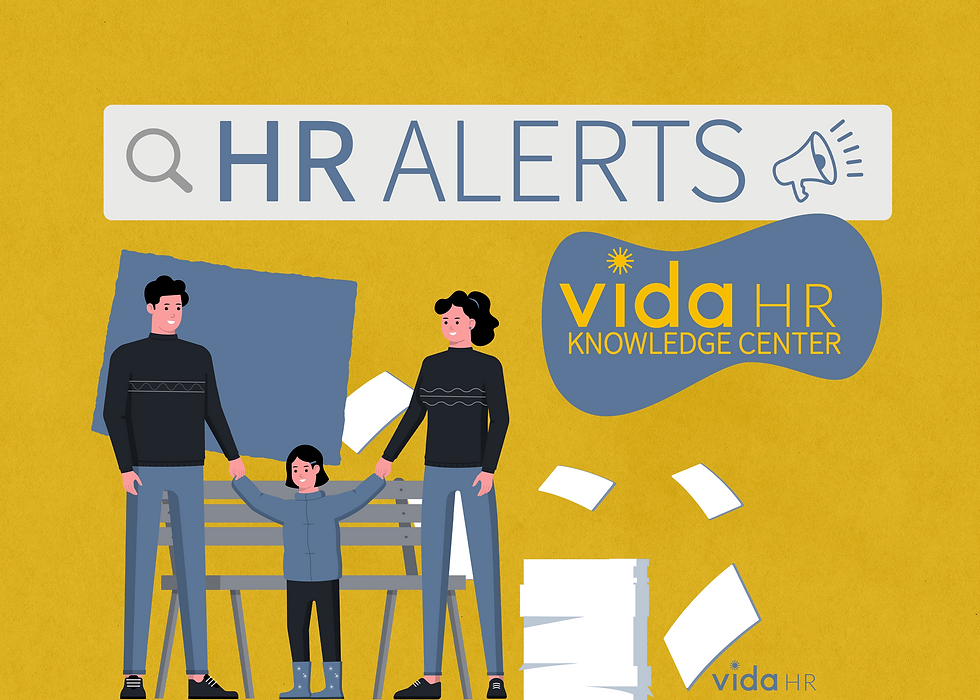How Incivility in the Workplace is Destroying your Company Culture
- Vida HR

- Apr 26, 2021
- 4 min read

By Regina Dyerly
VP, HR & Operations
Having spent a large portion of my Human Resources career focusing on company culture and organizational effectiveness, I have been pondering the rampant issue of incivility in the workplace. It is interesting that at a time when a good portion of HR budgets and internal resources are dedicated to culture driven programs, we have an increasingly counterproductive behavior that seems to regularly go unchecked. As the workplace evolves, becomes more fast paced, and more reliant on technology, civility is more important than ever.
For anyone who may be unsure of what exactly workplace incivility is, it is defined as a low intensity, deviant behavior with ambiguous intent to harm the target. Uncivil behaviors are characteristically rude and discourteous, displaying a lack of regard for others. These behaviors are often subtle, not as aggressive as workplace bullying, and as such often go unchecked.
There are three types of incivility:
Interpersonal: Breaking the norms of interpersonal decency and respect to targeted individuals, i.e., ignoring co-workers, not responding to requests, not returning phone calls, “forgetting” to share credit for collaborative work, interrupting others, shooting down ideas, giving “dirty looks’ and not listening.
Cyber: Uncivil behaviors via the internet, i.e., blunt or abrupt e-mails, not responding to e-mails, repeatedly leaving someone off of emails that pertain to them, inappropriate text messages or social media interactions.
Victimless: When there is no clear target or immediate intended negative impact, but the behaviors clearly violate the norms of decency and courtesy. i.e., being engrossed in reading messages on a cell phone during a meeting or conversation with another person, not picking up after oneself in a breakroom or common area, tossing trash near the trash bin and not picking it up, leaving a shared printer jammed or out of paper and possibly the worst act of incivility, not refilling the office coffee maker.
Although workplace incivility is low in intensity, it is also high in frequency and data indicates that nearly all employees have experienced some level of incivility in the workplace. When not addressed, these behaviors can spiral out of control, as incivility is contagious and employees (people) will reflect the treatment they receive. This type of work environment can lead to a decrease in performance, an avoidance of collaboration and creativity, an increase in employee attrition and deteriorate customer relationships and satisfaction. Overall, workplace incivility can be a culture killer with a very large price tag.
Here are a few suggestions on how to address and deter incivility in the workplace:
It starts from the top down. Managers should set a strong example and set the tone for your organization by always modeling civil behavior. Managers have a significant impact on company culture, when they display uncivil behavior it can be extremely damaging to your workplace. Furthermore, it is just as critical that managers address uncivil behaviors from their direct reports.
Model civil and respectful behavior from your very first interaction with a potential employee. It's astounding how many job seekers feel like they fell in a “black hole” after they apply or interview with a company. Always let candidates know where they stand, even if via a template email.
Create an onboarding program that sets clear expectations on acceptable and expected behavior. Create a Culture Statement that employees sign off on at the end of onboarding that specifically addresses what being civil entails. Do not assume everyone knows how to be civil; Civility is a skill not everyone has learned.
Take it a step further and train both managers and employees specifically on what civility looks like. Include specific situations where employees sometimes act uncivilly, provide tips on how to handle these situations and how to deescalate yourself and others to remain civil when emotions run high.
Cultivate an environment where employees feel like they can alert their manager or Human Resources when they feel uncomfortable, so uncivil behaviors can be addressed. This includes an avenue to hold managers accountable.
Have the uncomfortable conversations and address uncivil behaviors when they start, because they will rarely get better on their own. When employees notice that uncivil behaviors are not addressed, all leadership credibility is lost.
Survey your employees to see how you are doing. Spend the time to create a survey that asks relevant questions and repeat the survey every 6 months to check on progress. Don’t let this vital data go to waste! Create actions to address the issues that are identified from the surveys. Engage your employees to drive these actionable changes. Send out follow up communications on items that can be addressed, perhaps in a “You asked, we listened” format.
The suggestions above are all practical in nature, but may take time to become the “norm” within your organization. Maintaining a civil workplace is not an easy task, but it can be done by staying diligent. Taking whatever steps needed to maintain a respectful and civil workplace will reduce negative employee outcomes, increase organizational effectiveness and ultimately will help create a company culture to be proud of.




Comments